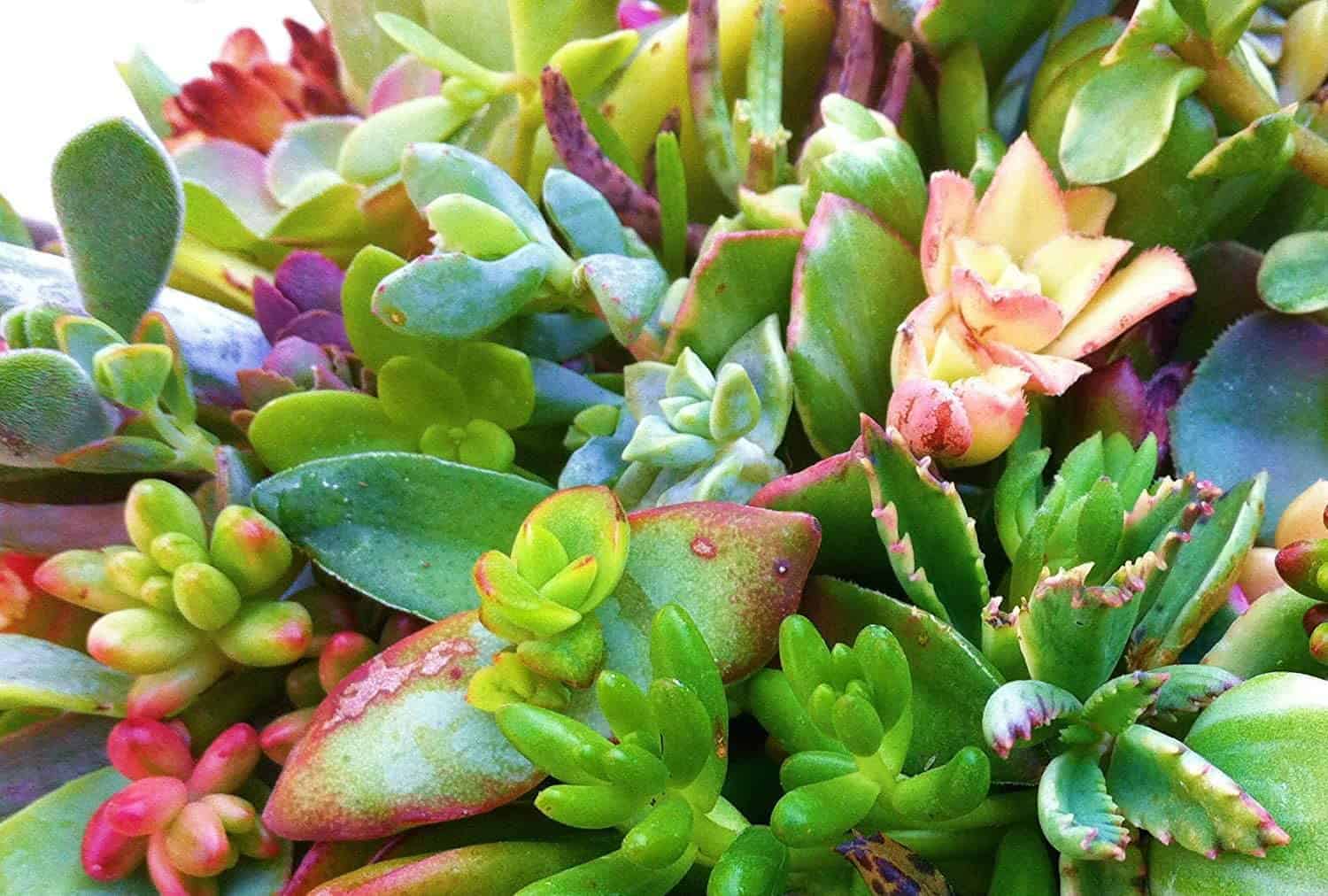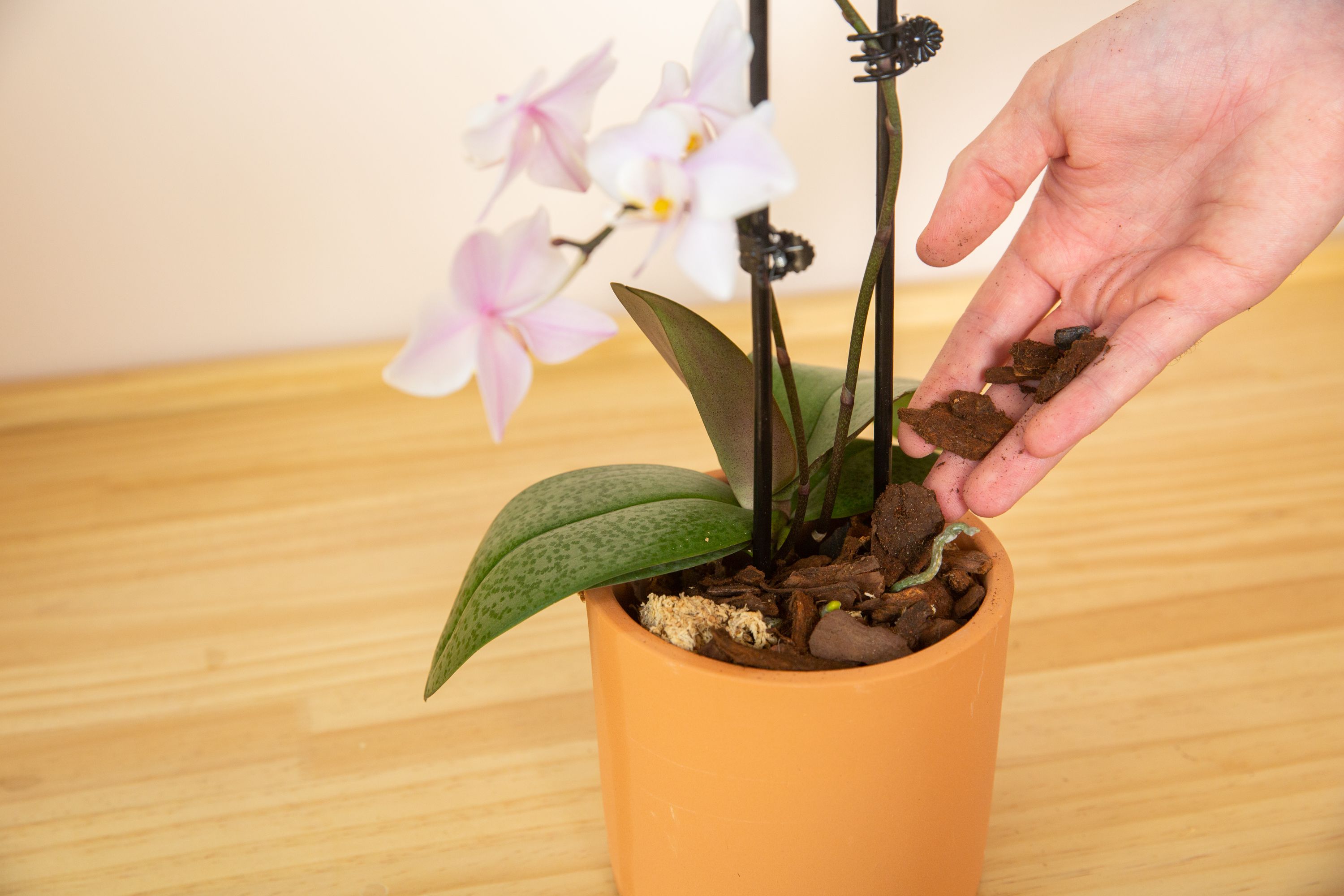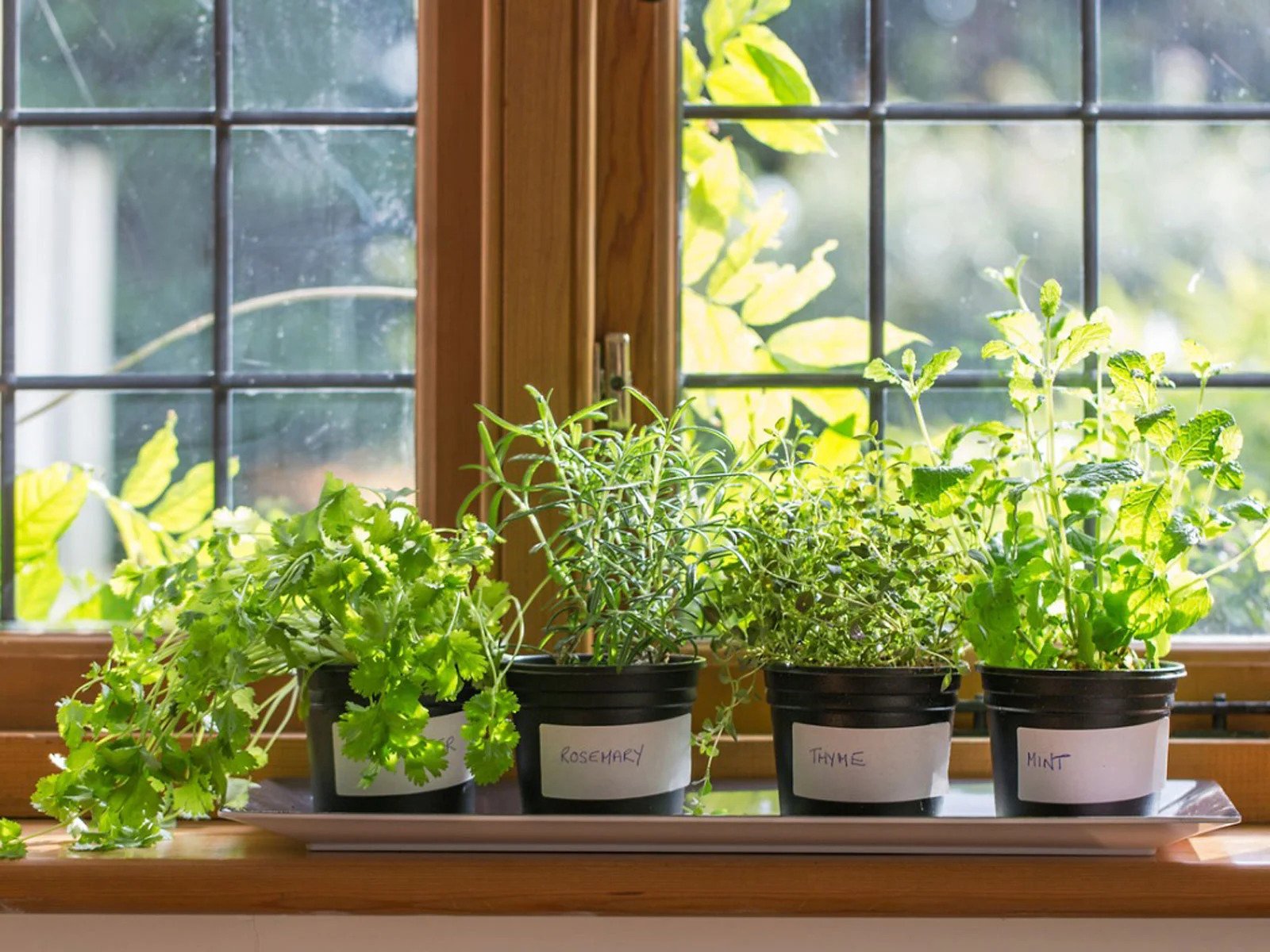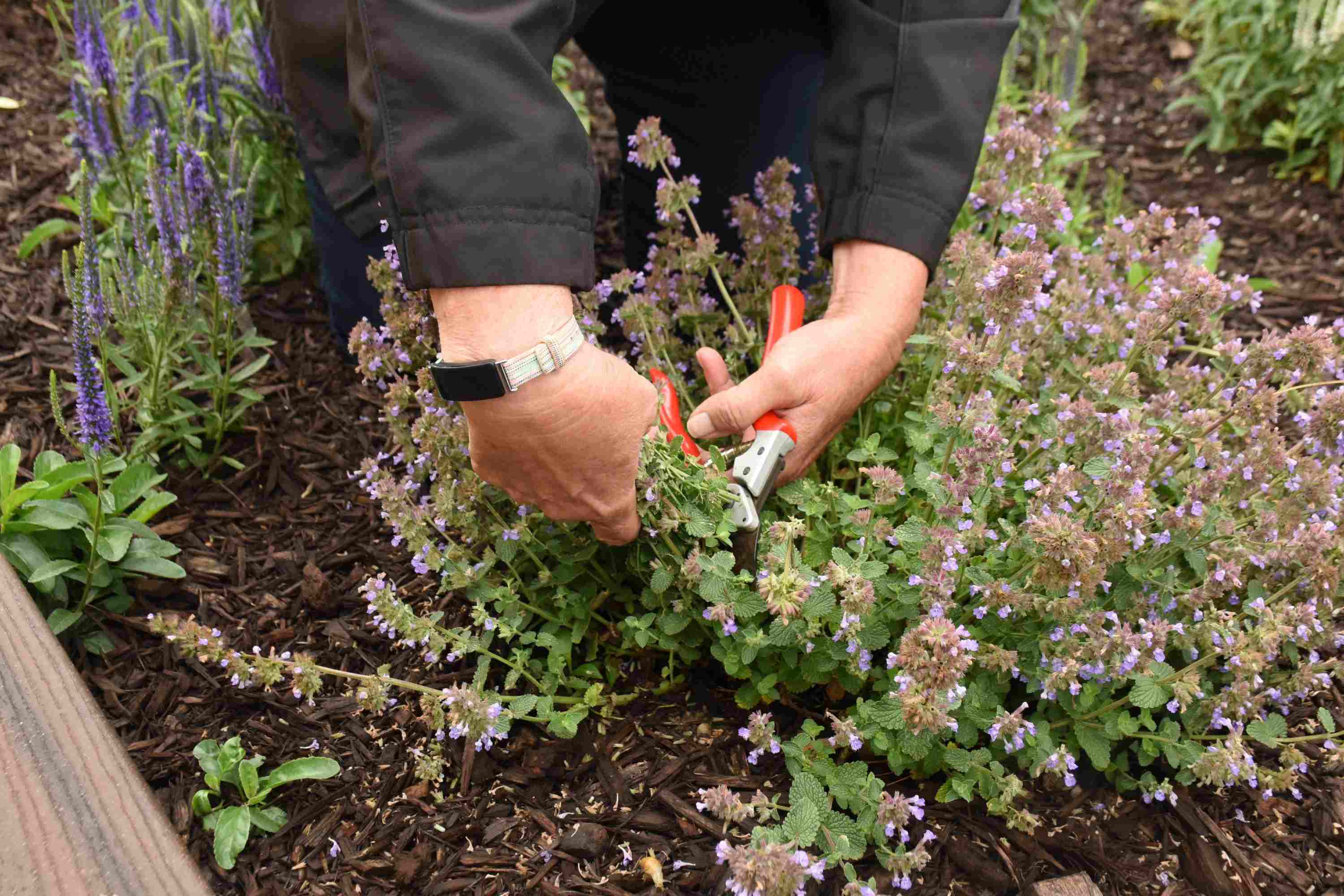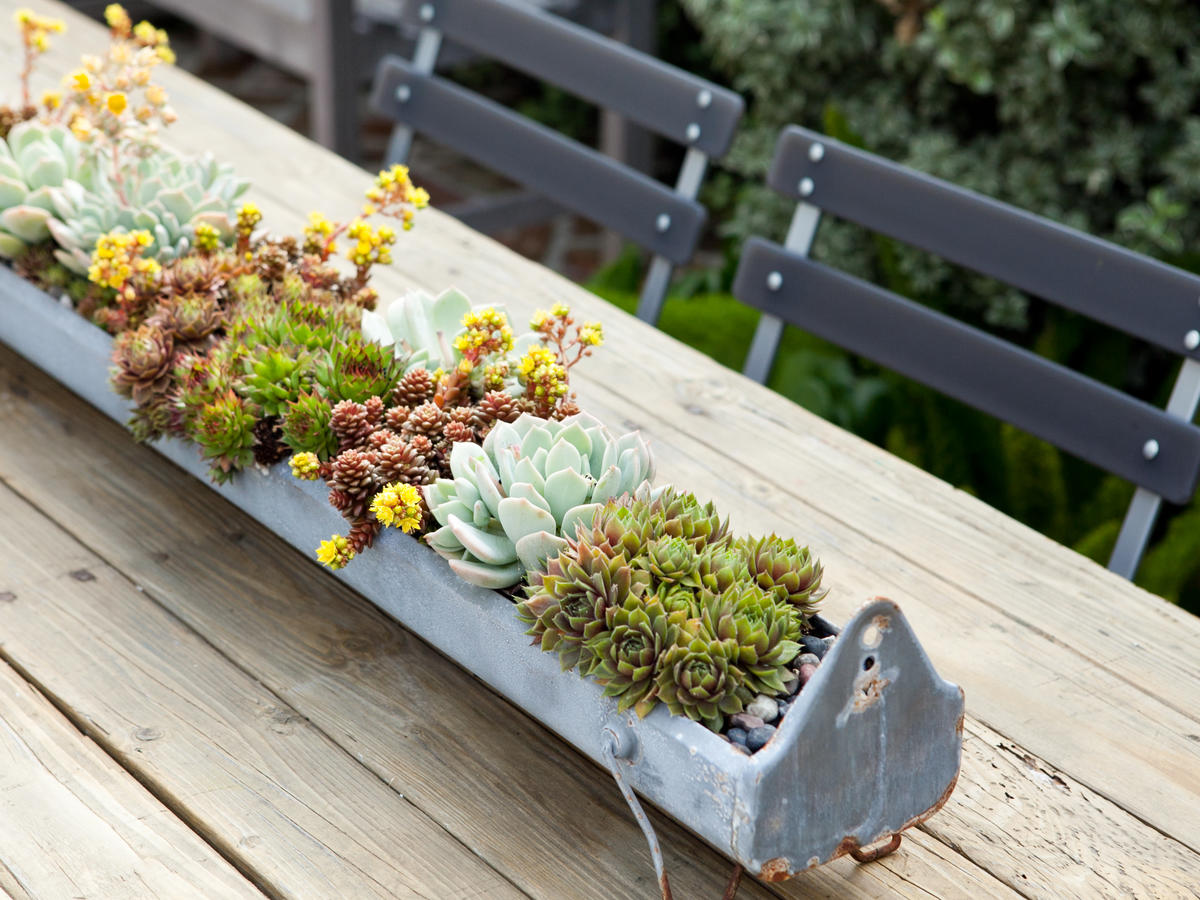Home>Gardening Techniques>Plant Care>How To Take Care Of A Bonsai Tree


Plant Care
How To Take Care Of A Bonsai Tree
Modified: February 9, 2024
Learn the essential tips and techniques for proper care and maintenance of your bonsai tree. Discover how to nurture and grow your plant with expert advice on plant care.
(Many of the links in this article redirect to a specific reviewed product. Your purchase of these products through affiliate links helps to generate commission for Chicagolandgardening.com, at no extra cost. Learn more)
Table of Contents
Introduction
Welcome to the enchanting world of bonsai trees! Bonsai, a Japanese art form, involves the cultivation and care of miniature trees, creating a harmonious balance between nature and human creativity. These tiny living sculptures bring a sense of peace, beauty, and tranquility to any space they adorn.
However, taking care of a bonsai tree is not a task to be taken lightly. It requires patience, diligence, and a deep understanding of the plant’s needs. In this guide, we will explore the essential aspects of bonsai tree care, equipping you with the knowledge to nurture these captivating plants.
As with any living being, the first step in caring for a bonsai tree is to choose the right one. Bonsai trees come in various species, each with its own unique characteristics and requirements. Understanding the specific needs of your chosen bonsai will be crucial for its long-term health and vitality.
Once you have selected your bonsai tree, it is essential to comprehend its basic needs. Light, water, pruning, and fertilizing are the key factors that contribute to the overall well-being of a bonsai. By providing the appropriate conditions, you can ensure that your bonsai thrives and retains its artistic form.
Throughout this guide, we will delve into the intricacies of each care component, providing insights, tips, and techniques to help you navigate the fascinating world of bonsai tree care. Whether you are a novice bonsai enthusiast or a seasoned gardener, this comprehensive guide will equip you with the necessary knowledge to take your bonsai tree care skills to new heights.
So, roll up your sleeves, grab your bonsai tools, and let’s embark on this journey together. Get ready to immerse yourself in the art of bonsai tree care and cultivate a masterpiece that will bring joy and serenity to your life.
Choosing the Right Bonsai Tree
When it comes to selecting a bonsai tree, there is a wide range of options available, each with its own character and charm. It is essential to choose a bonsai tree species that suits your preferences, skill level, and the environment in which it will be kept.
One important factor to consider is the size of the bonsai tree. Bonsai trees come in various sizes, ranging from tiny mame bonsai to more substantial, awe-inspiring specimens. Consider the space you have available and the visual impact you wish to achieve when selecting the size of your bonsai tree.
Another vital consideration is the style of the bonsai tree. Bonsai styles include formal upright, informal upright, slanting, cascading, and many more. Each style portrays a different aesthetic, conveying a sense of movement and balance. Explore the various styles and choose one that resonates with your personal taste.
The species of the bonsai tree is perhaps the most crucial aspect to consider. Some popular species for bonsai include Juniper, Pine, Maple, and Elm, among others. Research the specific needs and characteristics of different species to ensure they align with your capabilities and the environment in which the bonsai will be placed.
Additionally, consider the climate conditions in your location. While some bonsai trees are adaptable to different climates, others have specific temperature and humidity requirements. Understanding the climatic needs of your chosen bonsai species will help you provide the optimal conditions for its growth and development.
It is also worth mentioning that acquiring a bonsai tree from a reputable nursery or bonsai specialist is recommended. These professionals can provide expert advice on selecting the appropriate tree for your skill level and offer guidance on its care and maintenance.
Remember, choosing the right bonsai tree is a personal journey. It should be a tree that sparks joy and inspires you to create a connection with nature. Take your time to explore different species, styles, and sizes. Allow your intuition to guide you, and soon you will find the perfect bonsai tree that will bring beauty and tranquility to your life.
Understanding the Basic Needs of a Bonsai Tree
To provide proper care for your bonsai tree, it is essential to understand its basic needs. By meeting these requirements, you can ensure that your bonsai thrives and maintains its health and beauty.
Light: Bonsai trees require an adequate amount of light to carry out essential photosynthesis and maintain their overall well-being. Place your bonsai in a location that receives bright, indirect sunlight for a significant portion of the day. Different species have varying light preferences, so it’s crucial to research the specific light requirements for your chosen bonsai tree.
Water: Watering is a critical aspect of bonsai care, and finding the right balance is essential. Overwatering or underwatering can harm the tree’s roots and overall health. The frequency of watering will depend on factors such as the species of the tree, the size of the pot, and the climate. It is recommended to check the moisture level of the soil regularly and water thoroughly when it starts to feel slightly dry.
Pruning and Shaping: Pruning and shaping are vital techniques to maintain the desired aesthetic and form of a bonsai tree. Regular pruning helps control the growth and promotes branching, while shaping allows you to mold the tree into the desired style. Remember to use clean, sharp tools when pruning, and always follow the natural growth pattern of the tree.
Fertilizing the Bonsai Tree: Bonsai trees require regular fertilization to provide them with the necessary nutrients for healthy growth. Use a balanced, slow-release bonsai fertilizer, or a liquid fertilizer diluted to the recommended strength. Apply the fertilizer during the growing season, typically from early spring to late summer, and adjust the frequency based on the specific requirements of your bonsai species.
Repotting and Root Maintenance: Repotting is a crucial process that allows the bonsai tree to receive fresh soil and have its roots checked and trimmed if necessary. Repotting should be done every two to three years, depending on the growth rate of the tree. It is recommended to repot the bonsai during late winter or early spring before the new growth begins.
Preventing Pests and Diseases: Regular monitoring is vital to detect and prevent common bonsai pests and diseases. Inspect your tree regularly for any signs of pests such as aphids, scale insects, or spider mites. Maintain good hygiene by removing fallen leaves and debris that can harbor pests. If an infestation occurs, treat the tree promptly using appropriate organic or chemical pesticides.
By understanding and meeting these fundamental needs of a bonsai tree, you can create an environment that supports its growth and enhances its beauty. Remember to observe your tree closely, adapt your care routine accordingly, and enjoy the rewarding experience of nurturing your bonsai tree.
Providing Adequate Light
Light is essential for the health and vitality of a bonsai tree. It plays a crucial role in photosynthesis, the process by which plants convert light energy into chemical energy. Providing adequate light ensures that your bonsai thrives and maintains its lush foliage.
When it comes to lighting, finding the right balance is key. Bonsai trees require bright, indirect sunlight to flourish. Placing your bonsai tree near a window that receives ample sunlight is ideal. However, direct sunlight can be too intense and may scorch the leaves. In such cases, providing a sheer curtain or placing the bonsai slightly away from the window can help filter the light.
It is important to consider the specific light requirements of your bonsai tree species. Some species, like Juniper and Pine, thrive in full sunlight, while others, such as Maple and Azalea, prefer partial shade. Research the lighting preferences of your bonsai tree and ensure that it receives the appropriate amount of light to flourish.
If you are growing your bonsai indoors, it is important to supplement natural light with artificial lighting. LED grow lights or fluorescent tubes can provide the necessary spectrum of light for optimal growth. Position the lights a few inches above the tree, keeping in mind that the light intensity and duration should match the species’ needs.
Regularly rotate your bonsai to ensure even exposure to light on all sides. This prevents the tree from growing unevenly or leaning towards the light source. By rotating the bonsai every few weeks, you encourage balanced growth and maintain its aesthetic appeal.
Remember to strike a balance between light and shade. While light is important, excessive exposure to direct sunlight for extended periods can lead to leaf burn or dehydration. If you notice signs of leaf discoloration or wilting, it may be an indication that the bonsai is receiving too much light. In such cases, adjust the placement of the tree or provide shade during the hottest hours of the day.
Lastly, observe your bonsai tree closely. The response to light can vary depending on the species, environmental conditions, and seasonal changes. By paying attention to your tree’s behavior and adapting its lighting conditions accordingly, you can create an optimal environment for its growth and ensure its long-term health.
Watering Techniques
Proper watering is crucial for the health and vitality of your bonsai tree. Finding the right balance between underwatering and overwatering is key to maintaining the optimal moisture level in the soil and ensuring the root system’s well-being.
The frequency of watering will depend on several factors, including the species of your bonsai tree, the size of the pot, the climate, and the time of year. As a general rule, it is important to check the moisture level of the soil regularly.
When watering your bonsai, it’s important to thoroughly moisten the soil until water flows freely out of the drainage holes at the bottom of the pot. This ensures that the entire root system receives adequate moisture. Avoid shallow watering, as it can lead to dry patches and uneven hydration of the roots.
Be mindful of the specific water needs of your bonsai tree species. Some species, like Juniper and Pine, prefer slightly drier soil between waterings, while others, such as Azalea and Maple, prefer consistently moist soil. Research the specific requirements of your bonsai tree and adjust your watering routine accordingly.
During the hot summer months, bonsai trees may require more frequent watering due to increased evaporation. Keep a close eye on the soil moisture and increase the watering frequency if necessary. Conversely, during winter or cooler months, it is important to reduce watering as the tree’s growth slows down.
Avoid watering on a fixed schedule and instead rely on the moisture level of the soil as a guide. Stick your finger about an inch into the soil and check if it feels slightly dry. If it does, it’s time to water your bonsai.
Consider using a watering can with a fine nozzle or a misting spray bottle to ensure a gentle and even distribution of water. This prevents the disruption of soil structure and minimizes the risk of damaging delicate roots.
While watering is important, it’s equally crucial to avoid overwatering. Excessive moisture can lead to root rot and other fungal diseases. It is better to slightly underwater than overwater your bonsai. If you are unsure, it is always safer to err on the side of caution and water less rather than more.
Finally, remember that each bonsai tree is unique, and its watering needs may vary. Pay attention to how your tree responds to watering, observe the foliage, and monitor the soil moisture levels. By developing a watering routine that is tailored to your bonsai’s specific needs, you will ensure its continued health and vigor.
Pruning and Shaping
Pruning and shaping are essential techniques in maintaining the desired form and aesthetic appeal of your bonsai tree. By selectively removing branches and foliage, you can encourage growth, maintain proportions, and create a harmonious balance in your bonsai’s structure.
Regular pruning helps control the growth of the bonsai tree. It involves removing unwanted branches, shoots, and foliage to maintain the desired shape and aesthetics. Pruning also stimulates the growth of new buds and encourages finer branching, which contributes to the overall refinement of the tree.
When pruning, use clean, sharp bonsai pruning shears or scissors. This ensures a clean cut and minimizes damage to the surrounding tissue. Make precise cuts just above a leaf node or bud, using a technique known as “flush cutting.” Avoid leaving stubs, as they can potentially cause dieback or disease.
Branch selection is another important aspect of pruning. As your bonsai tree grows, choose which branches to keep and which ones to remove based on the desired design and overall balance. Select branches that enhance the tree’s overall structure, while removing branches that hinder the desired shape or compete with the central trunk.
To achieve a harmonious and natural appearance, try to follow the natural growth pattern of the tree while pruning. Mimic the way branches typically grow by positioning them in an alternating pattern along the trunk. This creates a sense of movement and balance that is visually appealing.
Shaping your bonsai tree involves more than just pruning. It is an art form that involves manipulating the tree’s branches and foliage to create a specific style or design. Bonsai trees can be shaped into various styles, such as formal upright, informal upright, cascade, and many others. Each style has its own aesthetic principles and techniques for achieving the desired look.
Wire is often used to shape bonsai trees. It allows you to bend and position branches into the desired shape, while still allowing for sufficient flexibility and growth. When wiring, take care not to apply too much pressure, as it can injure or scar the branches. Regularly check the wires and remove them once the branches have set in the desired position.
Remember that shaping your bonsai tree is a gradual process that requires patience and careful observation. Avoid drastic changes all at once, as this can shock or stress the tree. Instead, make small adjustments over time and monitor how the tree responds.
Regularly prune and shape your bonsai tree throughout the year, focusing on maintenance and refinement. By developing your pruning and shaping skills, you can create an artistic masterpiece that reflects your vision and showcases the natural beauty of the bonsai tree.
Fertilizing the Bonsai Tree
Fertilizing your bonsai tree is vital for providing it with the necessary nutrients to support healthy growth, vibrant foliage, and overall vitality. Bonsai trees are grown in containers, which limits their access to nutrients from the surrounding soil. Therefore, regular fertilization is essential to maintain their health and vigor.
There are various types of bonsai fertilizers available, including organic and synthetic options. Organic fertilizers, such as fish emulsion, bone meal, and seaweed extracts, provide slow-release nutrients and improve soil structure. Synthetic fertilizers, on the other hand, are quickly absorbed by the roots and offer precise control over the nutrient ratios.
When it comes to fertilizing your bonsai, it is important to choose a balanced fertilizer that contains a mix of essential nutrients such as nitrogen (N), phosphorus (P), and potassium (K). The ratio of these nutrients will vary depending on the growth stage of your tree and the specific requirements of its species.
During the active growing season, typically from early spring to late summer, you should fertilize your bonsai tree regularly. This provides the necessary nutrients to support vigorous growth and development. Follow the recommended dosage instructions provided by the fertilizer manufacturer to avoid over-fertilization, which can cause root burn or damage.
When applying fertilizer, it is best to dilute it in water to minimize the risk of root burn. Apply the fertilizer solution to the soil surface, ensuring that it is evenly distributed. Avoid direct contact with the tree’s foliage, as it can result in fertilizer burn or leaf damage.
Monitoring the response of your bonsai tree to fertilizer is crucial. If you notice signs of over-fertilization, such as leaf burn or excessive growth, reduce the frequency or amount of fertilizer applied. Conversely, if your tree appears pale or lacks vigor, it may be an indication that it requires more nutrients. Gradually adjust the fertilization routine based on the specific needs of your bonsai tree.
Remember that fertilizing alone cannot solve all issues with your bonsai tree. It is important to provide appropriate care in terms of light, water, pruning, and shaping. By creating a well-rounded care routine and ensuring proper fertilization, you can enhance the health and beauty of your bonsai tree and enable it to thrive for years to come.
Repotting and Root Maintenance
Repotting is a vital aspect of bonsai tree care, as it allows for the rejuvenation and maintenance of a healthy root system. Bonsai trees are cultivated in small containers, and over time, their roots become constrained, affecting their overall health and growth. Repotting helps provide fresh soil, prune and examine the roots, and ensure the optimal development of your bonsai tree.
The frequency of repotting depends on the growth rate of your bonsai tree and the size of the container. As a general guideline, repotting should be done every two to three years, but it can vary depending on the species and its specific needs. It is recommended to repot during late winter or early spring, just before new growth begins.
When repotting, gently remove the bonsai tree from its current container, taking care not to damage the delicate roots. Gently comb through the root ball with bonsai tools or your fingers to remove old, compacted soil. This process helps stimulate new root growth and prevents the roots from becoming rootbound.
Inspect the roots carefully for any signs of root rot, pests, or disease. Trim away any damaged or unhealthy roots using sterilized bonsai pruning shears or scissors. Aim to maintain a healthy balance between the roots and the foliage, ensuring that you remove only what is necessary.
Trimming the roots also helps control the size of your bonsai tree, ensuring that it remains in proportion to the container and the desired aesthetic. Prune the roots moderately, avoiding excessive removal, as it can stress the tree and hinder its recovery.
Select a bonsai-specific soil mixture that provides good drainage and water retention. This allows for proper aeration and nutrient absorption by the roots. It is important to use a mixture appropriate for the species and its specific requirements. Different species may have different soil preferences, such as a more organic mixture for moisture retention or a gritty mixture for improved drainage.
When repotting, place a layer of fresh soil at the bottom of the new container. Position the bonsai tree carefully, ensuring that it is centered and upright. Fill the container with the bonsai soil mixture, gently spreading and compacting it around the roots. Be cautious not to over-compact the soil, as it can hinder water drainage and root growth.
After repotting, water the bonsai thoroughly to settle the soil and rehydrate the roots. Place the newly repotted bonsai tree in a shaded or sheltered area for a few weeks to allow it to recover and adapt to its new environment. During this time, monitor the moisture level and adjust your watering routine as needed.
By regularly repotting and maintaining the roots of your bonsai tree, you ensure its long-term health and vitality. The process of repotting not only promotes root development but also enables you to examine and take corrective measures if any root issues are detected. With proper care and attention to root maintenance, your bonsai tree will continue to thrive and flourish.
Preventing Pests and Diseases
Pests and diseases can pose significant threats to the health and aesthetics of your bonsai tree. Prevention and early detection are crucial to ensure the continued well-being of your prized plant. By implementing effective pest and disease management techniques, you can protect your bonsai and keep it thriving.
Regular monitoring is essential in preventing pest infestations. Inspect your bonsai tree regularly, paying close attention to the foliage, branches, and the soil surface. Look for signs of common bonsai pests such as aphids, scale insects, spider mites, or fungal infections.
Maintain good hygiene practices in and around your bonsai tree. Remove fallen leaves, dead branches, or any debris that can serve as potential breeding grounds or hiding places for pests. Clean the bonsai tools, pots, and work area to prevent the spread of pathogens or pests from one tree to another.
Avoid overwatering, as excessively moist soil can attract pests and encourage fungal diseases. Improving the air circulation around the tree and adopting proper watering techniques can help prevent the development of fungal infections.
Introduce natural predators or beneficial insects to control pest populations. Ladybugs, lacewings, or predatory mites are natural enemies of aphids, whiteflies, and spider mites, and can help reduce their numbers. Research the specific pests affecting your bonsai tree and explore biological pest control methods.
For severe pest infestations or persistent diseases, consider using organic or chemical pest control products. Consult with a bonsai specialist or a local garden center to ensure that you choose the appropriate treatment for your specific situation. Always follow the instructions carefully and take safety precautions when using any pest control products.
Provide your bonsai tree with optimal growing conditions to strengthen its natural defense mechanism against pests and diseases. Ensure your bonsai receives the right amount of light, water, and nutrients. A healthy and well-maintained bonsai is less likely to succumb to common pests and diseases.
Regularly inspect the underside of leaves, where pests often hide. Also, monitor for any signs of discoloration, stunted growth, or wilting, as these can indicate the presence of pests or diseases. Swift action is crucial, as early detection and treatment increase the likelihood of successfully eliminating pests or curing diseases.
Remember that prevention is always better than attempting to treat an already established issue. By implementing preventive measures, maintaining good hygiene, and staying vigilant, you can safeguard your bonsai tree from pest infestations and diseases, ensuring its health, vibrancy, and long-term beauty.
Winter Care for Bonsai Trees
Winter brings unique challenges for bonsai tree care, as the cold temperatures, frost, and dry indoor conditions can impact the health and vitality of your bonsai. Proper winter care is crucial in ensuring the survival and well-being of your bonsai tree during the dormant season.
One essential aspect of winter care is protecting your bonsai tree from freezing temperatures. Cold drafts and prolonged exposure to freezing temperatures can damage roots and foliage. If your bonsai tree is kept outdoors, consider providing protection by placing it in a sheltered location, such as against a wall or under a covered porch or patio. Wrapping the pot with insulating materials, like burlap or bubble wrap, can provide an extra layer of protection.
Watering is another critical consideration during the winter months. While bonsai trees require less water during their dormant period, it is important to ensure that the soil does not completely dry out. Check the moisture level of the soil regularly, and water sparingly when it starts to feel slightly dry. Avoid overwatering, as the excess moisture can lead to root rot in colder temperatures.
Humidity levels tend to drop during the winter months, especially when the heating systems are in use indoors. Dry air can cause dehydration and stress to your bonsai tree. To mitigate this, consider using a humidity tray filled with water to create a humid microclimate around the bonsai. Grouping multiple bonsai trees together can also help create a slightly more humid environment.
Lighting is important during winter, as daylight hours are shorter. Position your bonsai tree near a well-lit window to maximize the exposure to natural light. Alternatively, consider using artificial grow lights to supplement the natural daylight. Adjust the distance and duration of the light based on the specific light requirements of your bonsai tree species.
During the winter months, growth slows down, and fertilization is not necessary. Avoid applying fertilizer to your bonsai tree during this period, as it may promote unnecessary growth. Resume fertilization in early spring as the tree starts to emerge from dormancy.
Pruning and shaping should be minimized during the winter season. The tree is in a dormant stage, and pruning can cause stress and delay healing. However, it is a good time to observe and evaluate the structure of your bonsai tree, making notes for potential pruning or shaping in the upcoming growing season.
Regularly inspect your bonsai tree for any signs of pests or diseases, as they can still occur even during the winter months. Treat any issues promptly to prevent them from spreading and causing further damage to the tree.
Lastly, be patient and allow your bonsai tree to go through its natural dormant period during winter. Restrict major styling or repotting until the growing season begins again in spring. Winter care is about maintaining the tree’s health and providing conditions that support its natural cycle of growth and rest.
By providing appropriate protection, monitoring watering needs, ensuring adequate lighting and humidity levels, and minimizing pruning and fertilization, you can successfully navigate the winter season and help your bonsai tree thrive when the warmer months return.
Conclusion
Caring for a bonsai tree is a rewarding and fulfilling journey that requires patience, knowledge, and a deep connection with nature. Through this comprehensive guide, we have explored the various aspects of bonsai tree care, from choosing the right tree to understanding its basic needs and implementing essential techniques.
By selecting the appropriate bonsai tree species, considering its size, style, and climate requirements, you set a solid foundation for the long-term health and success of your bonsai. Understanding the basic needs of your bonsai in terms of light, water, pruning, and fertilizing allows you to provide optimal conditions for its growth and development.
Pruning and shaping your bonsai tree not only contribute to its aesthetic appearance but also promote balanced growth and refinement. By mastering the art of pruning, you can create a harmonious balance between branches and foliage, accentuating the beauty of the tree.
Proper fertilization plays a crucial role in providing the necessary nutrients for your bonsai’s health and growth. By selecting the right fertilizer, dosing it appropriately, and adjusting according to the specific needs of your bonsai tree, you ensure its continued vitality.
Repotting and root maintenance are essential practices that rejuvenate and support a healthy root system. By regularly repotting, examining and pruning the roots, and using appropriate soil mixtures, you provide the necessary conditions for the optimal development of your bonsai tree.
Preventing pests and diseases through regular monitoring, good hygiene practices, and timely intervention safeguards the overall health and beauty of your bonsai tree. By actively protecting your bonsai tree from the threats posed by pests and diseases, you promote its longevity and well-being.
Lastly, winter care is a crucial part of bonsai tree maintenance. By protecting your bonsai from freezing temperatures, adjusting watering routines, ensuring proper lighting and humidity levels, and minimizing activities such as pruning and fertilizing, you enable your bonsai tree to thrive even in the dormant season.
Remember, each bonsai tree is unique, and its care may require slight adaptations based on its species, environment, and growth patterns. Observing your bonsai tree closely, adapting your care routine accordingly, and continuously deepening your knowledge and skills will help you develop a strong bond with your bonsai tree and nurture it into a true work of art.
So, armed with this comprehensive guide, embark on your journey as a bonsai enthusiast or continue to refine your existing skills. Immerse yourself in the beauty and serenity of the bonsai world, and enjoy the rewards that come with caring for these mesmerizing miniature trees.
